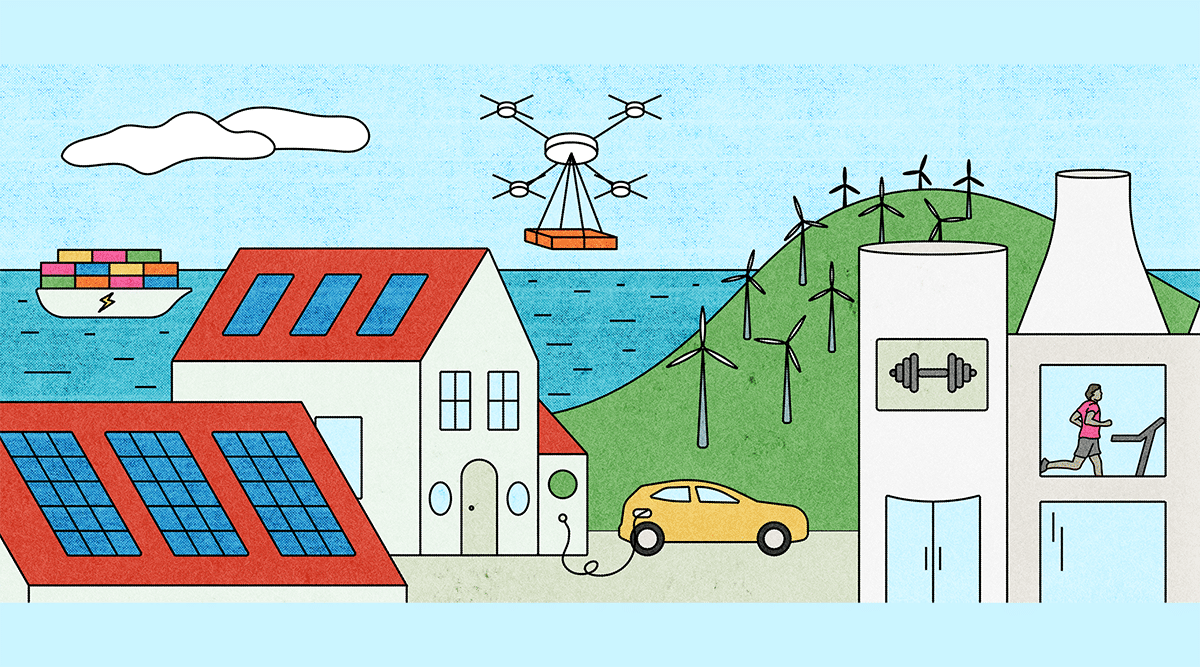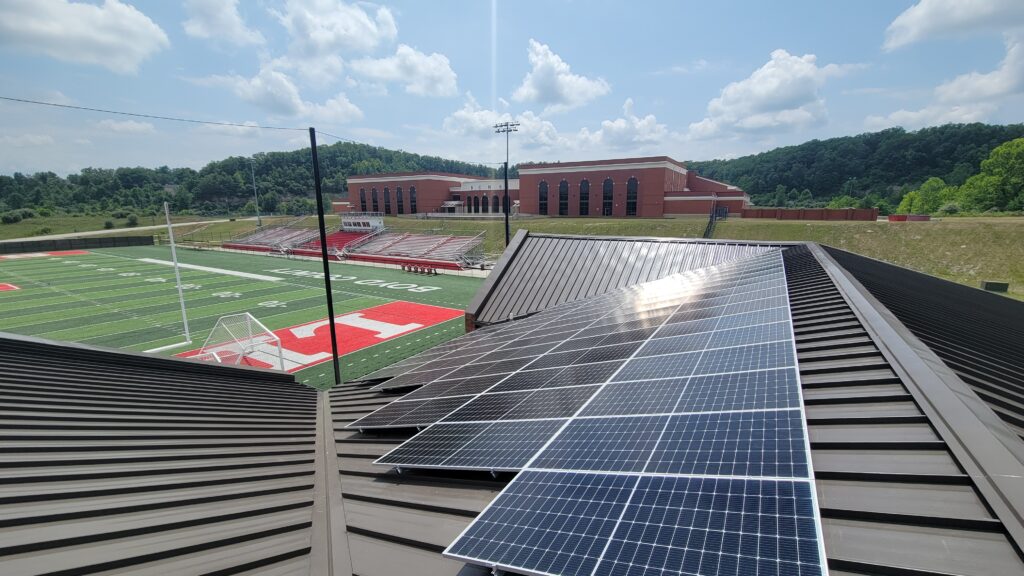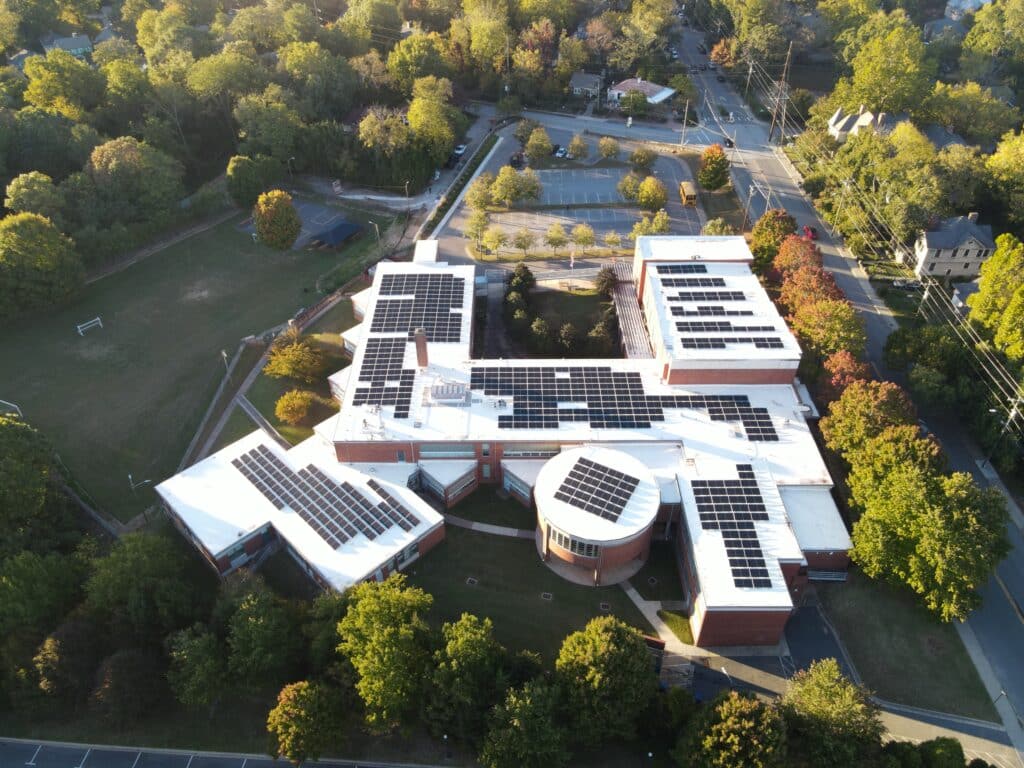With all of the amazing breakthroughs and advancements towards a clean energy future this past year, it’s exciting to imagine what our clean energy future will actually look like. As technology advances, prices continue to plummet, and more and more localities begin to see the benefits, it can help to envision what that looks like in our own lives. Visualizing the future you want with positive expectations can help you make the changes you need to in order to create it, and motivate us to achieve those expectations (instead of just fantasizing about them).
From oddity to ordinary
While the phenomenon of producing electricity from sunlight was first discovered back in 1839, most of us were introduced to solar panels by those ubiquitous solar-powered calculators of the 1990s. Baby, would you look at us now! Solar panels are inexpensive and efficient enough for a lot of Americans (4 out of 5 homes get enough sunlight to make solar viable) and it’s easy to see if they are for you.
Solar energy is one example of how clean-energy innovations, and policies to support them, can transform daily life for the better in a relatively short period of time. Solar, wind, and battery storage will account for nearly three-quarters of all new U.S. electricity added in 2022. A decade ago, that figure was less than a third—methane gas power still dominated. Same with electric vehicles (EVs), which have grown from a few thousand sold in the U.S. in 2010 to well above 300,000 annually since 2018 (more than 430,000 in 2021). Solar panels, wind farms, and EVs are now everyday sights rather than anomalies.
So the clean energy future that seemed perhaps dubious when the U.S. was in the throes of a gas and oil fracking boom is already here in many respects. What does the next chapter of clean energy look like, and how do we get there? Here are some themes to watch.
(More) new clean energy sources
In addition to foundational renewable energy technologies like wind and solar, we also need a gamut of other clean energy sources and technologies to help power and decarbonize all sectors of our economy.
In the future, we’ll be relying more on offshore wind turbines that can generate large amounts of energy for coastal communities. The United Kingdom, China, and Germany are leading the way so far, but the U.S. is also pushing ahead with offshore wind. The nation’s first commercial offshore wind project debuted off Rhode Island in 2016, and more are on the way, with Maryland, Massachusetts, and New York pushing ahead on new projects. Marine energy—harvesting motion from waves and currents in water—isn’t quite as far along as offshore wind, but is another active and potent area of development.
To power the bigger, hard-to-decarbonize sectors like industry, trucking, and aviation, a variety of efforts are underway, but it’s too early to declare any winners. Time will tell whether these sectors mainly will run on hydrogen, massively powerful and light batteries, biofuels from waste products—or something no one has invented yet. The big key for all of these technologies will be to bring the scale up and the costs down.
Electrifying everything
In the meantime, more of our homes, businesses, and cars will run on clean electricity. California is on track to begin requiring solar panels on new buildings in 2023; more U.S. municipalities are ditching gas as fuel for homes; and bans on new sales of gasoline-fueled cars, coupled with mandates for EV charging, continue to roll in across the globe. Expansions of community solar—one array that powers many homes or a building with many tenants—will open up clean energy access beyond those who have been able to install them at home.
Picture this: The clean-energy home of the future will have solar panels, a heat pump for climate control, all-electric appliances (including an induction cooktop instead of gas), and a fast EV charging station. Your thermostat, appliances, and chargers could be set to run when power prices are lowest. Your energy bills are likely to be a lot lower—the average U.S. household stands to save $356 a year by going electric. Beyond homes, shopping centers may offer the ability to order food to be delivered to your car while you charge up. And electric-powered drones and small aircraft could transform mobility and deliveries in cities.
Reclaiming real estate (and carbon) from fossil fuels
“The fossil fuel industry is actively battling the rise of renewables,” writes New York Times columnist Farhad Manjoo. “But at most, it can only slow things down. A carbon-free energy economy is coming whether oil and coal companies like it or not.” Given that reality, part of the new clean energy economy will be based on remediating territory once dominated by fossil fuels.
Already, former coal power plants have been repurposed, such as an athletic facility and a medical marijuana farm. And inactive oil and gas sites across the U.S. amount to more than 2 million acres of restorable land, a study found last year. Companies are finding ways to repurpose carbon into products we need like fabric for clothes, cutlery for eating, furniture for your home, and even fish food.
Building up a new workforce
New tech goes hand-in-hand with new jobs, and renewables, energy efficiency, and EVs are no different. Solar, wind, and energy storage already employ more than 415,000 workers, and turbine technicians and solar installers are still two of the fastest-growing careers in the U.S., (making 130% of the median worker’s salary in America). The White House has just announced a new Clean Energy Corps dedicated to research and deployment of clean energy solutions, and has proposed policies that would create an additional 500,000-600,000 clean energy jobs.
All of these scenarios are possible because of what President Biden’s Science Advisor Eric Lander called “ferocious innovation” in a recent rundown of the administration’s research priorities to reach zero emissions.
“Sometimes in science, we get so worried about why things might fail, that we don’t devote enough imagination to how things might succeed,” Lander said. “Ferocious innovation means setting bold goals, overcoming the fear of failure, and focusing on how to succeed, even on really hard problems. We need to open the lens and try many possibilities in parallel.”
Ferocious innovation doesn’t always work like the flip of a switch, transforming the world with one breakthrough after another. It might be more like your LEDs at home, a smart thermostat, or an electric car: Modest but major improvements that build up over time and make it hard to imagine ever going back to the old way of doing things.















